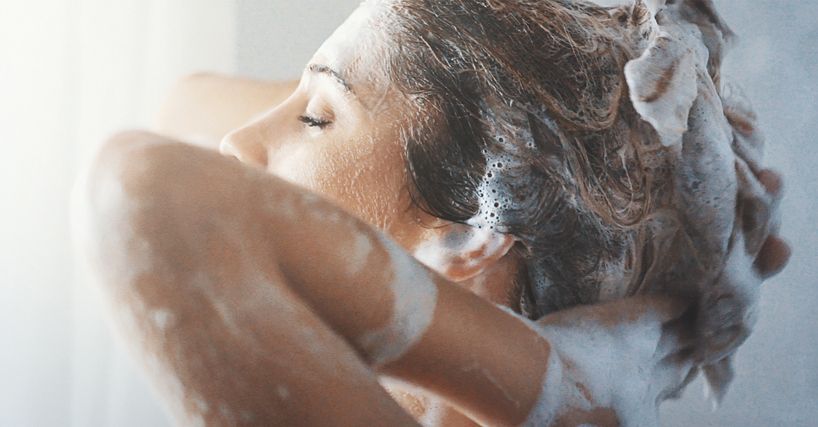Author: Natalie Ng|Updated: 29 April 2025
Acne is super common, especially for teens and young adults. It shows up in different ways—blackheads, whiteheads, red bumps, or deep, painful spots. These are all types of acne, and each has its own cause. Most breakouts happen when dead skin, excess oil, and bacteria clog your hair follicles. Hormonal changes, like during your period or puberty, can make acne worse. Some spots go away fast, while others stick around and leave acne scars or discoloration. Knowing what kind of acne you have helps you find the right treatment—whether that’s salicylic acid, benzoyl peroxide, or a visit to a dermatologist for something stronger. Keep reading to learn how to spot each type and figure out the best way to treat it.

Common Causes of Acne Formation
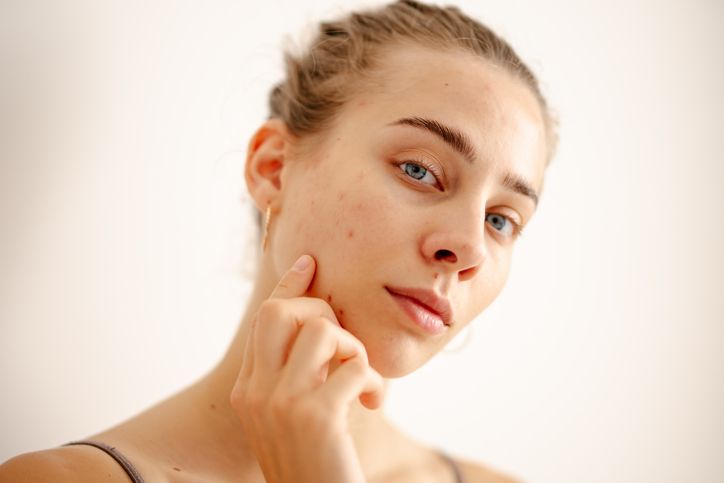
Hormonal Changes
Hormonal changes are one of the main causes of developing acne, especially during puberty, your menstrual cycle, or times of high stress. These changes increase androgens in the body, which tell your oil glands to produce more oil.
How Hormones Affect Your Skin
When oil production goes up, your pores are more likely to get clogged with dead skin cells and excess oil. This creates the perfect setup for inflamed bumps, pus-filled lesions, or even more severe forms like nodular acne or cystic acne. Hormonal acne usually appears around the jawline, chin, and cheeks.
Clogged Hair Follicles
Acne often starts when dead skin and oil block the hair follicles. This buildup traps bacteria under the surface of the skin, which leads to inflamed bumps and other types of acne.
What Causes Clogged Pores
Dead skin cells that don’t shed properly can mix with excess oil and block your pores. This trapped mixture can lead to acne vulgaris, blackheads, whiteheads, and even fungal acne in some cases. Popping pimples can make this worse by damaging the skin and causing deeper infections or acne scars.
Excess Oil Production
Your oil glands are meant to keep your skin moisturized. But when they produce too much oil, it can mix with dead skin and bacteria, causing different types of breakouts.
Risk Factors for Oil Overproduction
Common risk factors include hormonal changes, high-glycemic foods, birth control pills, family history, and certain medications. Too much oil can lead to stubborn acne that doesn’t clear up easily without the right acne treatment or acne medication.
Bacterial Growth
Bacteria that naturally live on your skin—like Cutibacterium acnes—can grow too fast when your pores are clogged. This causes the immune system to react, leading to swelling, redness, and pus-filled bumps.
How Bacteria Triggers Inflammation
This is what leads to inflammatory acne, which includes papules, pustules, and more painful cystic acne. If left untreated, this type of acne can leave textural scarring or permanent scarring on the surface of the skin.
Want to know how to tell one type of acne from another? Keep reading—we’ll break down the different types of acne and how to spot them.

Blackheads and Whiteheads: The Basics
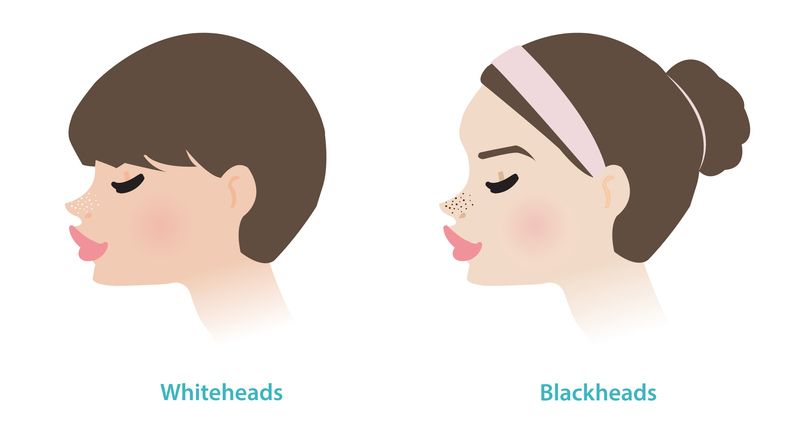
What Are Blackheads and Whiteheads?
Blackheads and whiteheads are both non-inflammatory types of acne. They're also called comedones. You’ll usually see them on your face—especially around the nose, chin, and forehead—where oil glands are more active. These clogged pores start the same way, but the difference comes from whether the pore stays open or closed.
Blackheads (Open Comedones)
Blackheads form when dead skin cells and excess oil block the hair follicles. Because the pore stays open, the trapped material reacts with oxygen in the air. This oxidation turns the plug dark, which is why blackheads look like tiny black dots.
Whiteheads (Closed Comedones)
Whiteheads also come from clogged hair follicles filled with oil and skin cells. But in this case, the pore stays closed, so the plug remains under the surface of the skin. These appear as small, white or skin-colored bumps. Unlike blackheads, they don’t oxidize because there’s no air exposure.
Why They Happen
A few things can trigger blackheads and whiteheads:
• Excess oil production from overactive oil glands
• Hormonal changes during puberty, menstruation, or stress
• Buildup of dead skin that clogs pores
• Pore-clogging products, especially those not labeled non-comedogenic
• Touching your face or not cleansing after sweating
• Genetics, which can affect your oil production and how your skin sheds
How to Treat and Prevent Comedones
To treat these non-inflammatory types of acne, focus on keeping your pores clear:
• Use salicylic acid or beta hydroxy acids (BHAs) to dissolve oil and dead skin inside pores
• Try benzoyl peroxide if you’re also seeing signs of bacteria
• Add retinoids to your routine to boost skin cell turnover and reduce future clogged pores
• Stick to oil-free, non-comedogenic products to avoid making acne worse
• Cleanse your face twice daily with a gentle face wash, especially after sweating
If blackheads or whiteheads keep coming back or get worse, a board-certified dermatologist can help with prescription medications or stronger topical treatments.
Read More
Book Now to Experience
Acne Treatment
1 Minute Self-Registration
Date should not be before minimal date

Understanding Papules and Pustules
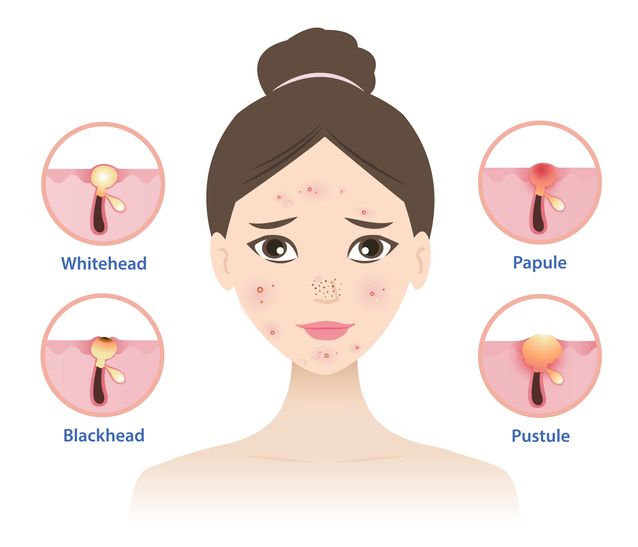
What Are Papules?
Papules are small, red bumps that form when a clogged pore becomes irritated and inflamed. Unlike blackheads or whiteheads, papules don’t contain pus. They’re firm to the touch and can feel sore, especially when clustered together.
These bumps form when dead skin cells, excess oil, and bacteria cause the wall of the hair follicle to break down. This allows the contents to spill into nearby skin tissue, triggering an immune response that leads to swelling and redness.
What Are Pustules?
Pustules are similar to papules but contain visible pus. They’re red at the base with a white or yellow center. That pus is a result of your body’s immune system sending white blood cells to fight bacteria inside the pore.
Unlike whiteheads, pustules are inflamed and painful. Squeezing or popping them increases the risk of permanent scarring and can make acne worse by spreading bacteria.
Why They Form
Several factors contribute to the development of papules and pustules:
• Clogged pores caused by dead skin and excess oil
• Bacterial growth inside the pore (especially Cutibacterium acnes)
• Hormonal changes that increase oil production
• Picking or touching the skin, which irritates breakouts
• Using harsh products that disrupt the skin barrier
These are common signs of inflammatory acne and can become worse without the right treatment.
How to Treat Papules and Pustules
To reduce inflammation and speed up healing:
• Use benzoyl peroxide to kill bacteria and reduce swelling
• Try salicylic acid to unclog pores and prevent new spots from forming
• Apply retinoids to help skin shed properly and prevent clogged pores
• Avoid picking or popping bumps to prevent scarring
• Use non-comedogenic skincare to avoid further irritation
For more persistent or severe acne, especially if you’re seeing a mix of papules, pustules, and cysts, consider speaking with a board-certified dermatologist about prescription medications.

Identifying Nodular Acne
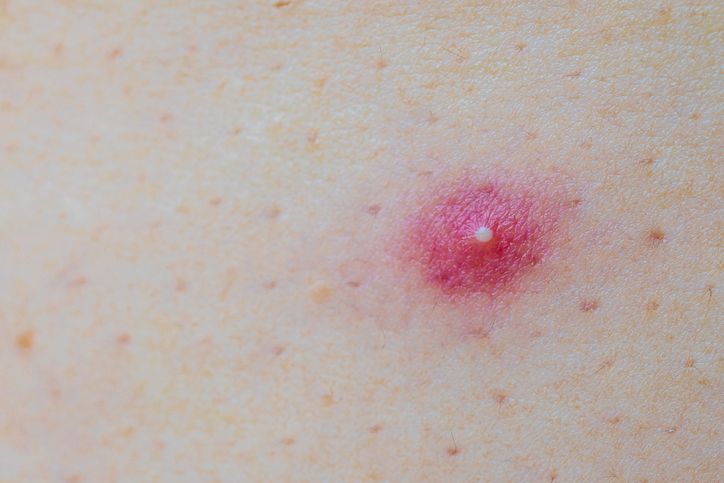
What Is Nodular Acne?
Nodular acne is a severe form of inflammatory acne. It forms deep under the surface of the skin and feels like hard, painful lumps. These lesions don’t come to a head like whiteheads or pustules. Instead, they stay beneath the skin and can last for weeks or even months.
Nodules are larger than typical pimples—usually 5mm or more in diameter—and feel firm when you touch them. They often show up on areas like the face, chest, and back, where oil glands are more active.
Why Nodules Develop
Nodular acne happens when clogged pores become severely inflamed. This deep inflammation causes damage below the skin's surface, making the bumps harder to treat.
Triggers include:
• Hormonal changes (such as puberty, menstruation, or stress)
• Excess oil production that blocks hair follicles
• Bacterial growth that causes deep infections
• Family history, which increases your risk for severe acne
• Untreated breakouts that get worse over time
Nodules can occur on their own or with other types of acne like papules or cysts. The deeper the inflammation, the higher the chance of permanent scarring and textural damage.
Why You Shouldn’t Treat Nodules at Home
Nodular acne doesn't respond well to over-the-counter treatments like salicylic acid or benzoyl peroxide. These products can’t reach the deep layers where nodules form.
Trying to squeeze or pop them can cause:
• Permanent scarring
• Worsened inflammation
• Spread of bacteria
• Skin discoloration
How to Treat Nodular Acne
Because of how deep and painful these lesions are, professional treatment is necessary. A dermatologist might recommend:
• Oral retinoids (like isotretinoin) to reduce oil production
• Prescription-strength topical treatments
• Oral antibiotics to reduce bacteria and inflammation
• Cortisone injections to shrink large nodules quickly
If you’re dealing with stubborn acne that keeps coming back or leaves marks behind, don’t wait to get help. Early treatment can prevent long-term damage and improve your skin’s health over time.
Book Now to Experience
Acne Treatment
1 Minute Self-Registration
Date should not be before minimal date

Recognizing Cystic Acne
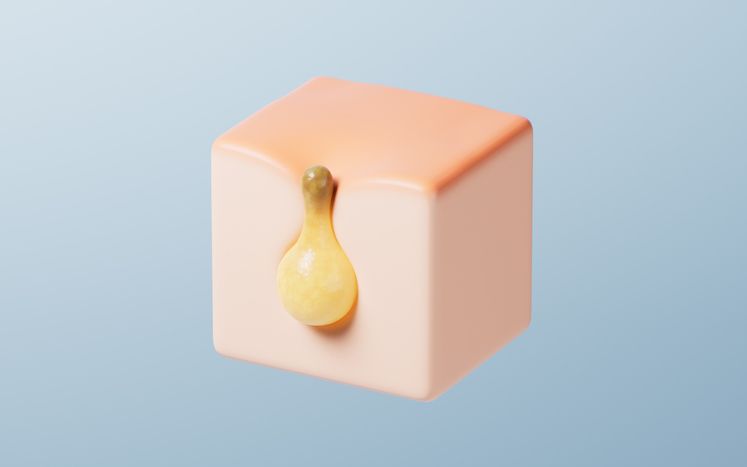
What Is Cystic Acne?
Cystic acne is the most severe type of acne. It forms deep, soft lumps under the skin that are filled with fluid or pus. These cysts are usually large, red, and painful—even when you don’t touch them. Unlike whiteheads or pustules, cysts don’t come to a visible head.
Cystic acne is more likely to cause permanent scarring, especially if left untreated or picked at. You’ll often find these painful cysts on the face, jawline, neck, chest, back, or shoulders.
What Causes Cystic Acne?
Cystic acne forms when dead skin cells, excess oil, and bacteria clog a pore and cause a deep infection. Your immune system responds with intense inflammation, leading to swollen, pus-filled cysts beneath the skin.
Common triggers include:
• Hormonal changes, such as during puberty, menstrual cycles, or stress
• Family history, which increases your risk for developing deep acne
• Overactive oil glands that produce too much sebum
• Clogged hair follicles, often worsened by heavy skincare or makeup products
• Diet and certain medications, which may trigger flare-ups in some people
Cystic acne is often linked to hormonal acne, especially in women during their menstrual cycle or due to conditions like PCOS.
How to Identify It
You may be dealing with cystic acne if you notice:
• Large, swollen lumps deep under the skin
• Painful bumps that don’t pop or come to a head
• Redness and tenderness even without touching the area
• Recurring breakouts in the same spot
• Scarring or skin discoloration after healing
Treating Cystic Acne
Over-the-counter treatments like benzoyl peroxide or salicylic acid are usually not strong enough for cystic acne. You’ll need professional care to prevent permanent scarring and future breakouts.
Effective treatment options include:
• Oral retinoids (like isotretinoin) to reduce oil production
• Hormonal treatments, such as birth control pills or anti-androgens
• Oral antibiotics to calm inflammation and fight bacteria
• Corticosteroid injections for quick relief from large, painful cysts
• Laser treatments to reduce oil glands and improve skin texture
If you're experiencing emotional distress, low self-esteem, or ongoing cystic breakouts, it’s important to seek help from a board-certified dermatologist. The earlier you start treatment, the better your chances of preventing textural scarring and long-term skin damage.

Body Acne vs. Facial Acne
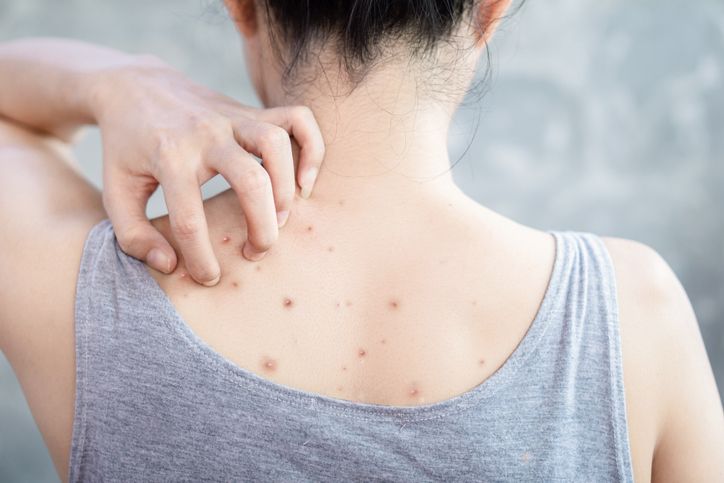
How They’re Different
While both body and facial acne form in similar ways—through clogged hair follicles, dead skin cells, excess oil, and bacteria—they look and behave differently depending on where they show up.
Facial acne tends to appear in oilier areas like the T-zone (forehead, nose, chin) and cheeks. Body acne, on the other hand, shows up on thicker-skinned areas like your back, chest, and shoulders, often as larger, deeper breakouts.
Why Body Acne Happens
Body acne often starts with friction, sweat, and tight clothing. Things like backpacks, sports bras, and synthetic fabrics trap heat and moisture against your skin, especially during workouts. This environment makes it easier for bacteria and fungus to grow inside clogged pores.
Other triggers include:
• Not showering right after sweating
• Wearing clothes that don’t breathe
• Using laundry detergents or body products that clog pores
• Hormonal changes and genetics, similar to facial acne
Fungal acne (technically not true acne) can also appear on the body. It’s caused by yeast overgrowth and may look like itchy, uniform bumps on the chest or back.
Why Facial Acne Happens
Facial acne is usually triggered by:
• Hormonal fluctuations that increase oil production
• Touching your face or not removing makeup properly
• Comedogenic products that clog pores
• Diet and stress, which can throw off your skin’s balance
• Not changing pillowcases or cleaning phone screens regularly
Facial skin is more sensitive than body skin, so you’ll need gentler treatments to avoid irritation and damaged skin.
Key Differences to Look For
• Body acne tends to be more spread out and deeper due to thicker skin
• Facial acne usually appears as smaller breakouts in more concentrated areas
• Body breakouts are more resistant and take longer to heal
• Facial acne is more likely to respond to topical spot treatments
• Friction and sweat play a bigger role in body acne than facial acne
Book Now to Experience
Acne Treatment
1 Minute Self-Registration
Date should not be before minimal date

Treatment Approaches Compared
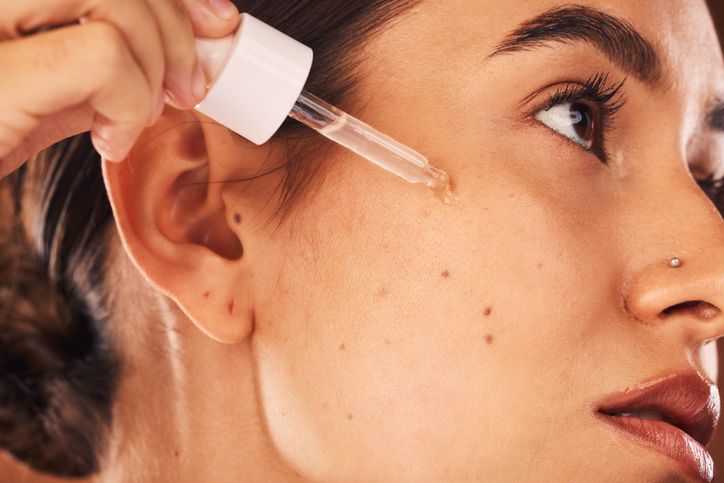
Treating Facial Acne
Facial skin is thinner and more sensitive, so acne treatments need to be effective without causing irritation. Here’s what works best for facial breakouts:
• Salicylic acid helps clear out clogged pores and exfoliate dead skin
• Benzoyl peroxide reduces bacteria and inflammation—look for lower strengths (2.5%–5%) to avoid dryness
• Topical retinoids speed up skin cell turnover and prevent clogged pores
• Non-comedogenic moisturizers keep skin hydrated without worsening acne
• Spot treatments can help shrink pink bumps or inflamed areas quickly
• Gentle cleansers prevent irritation and support the skin barrier
Stick to products labeled for facial use, especially if you have sensitive or acne-prone skin. Overusing strong treatments can damage the skin’s surface and lead to more breakouts or discoloration.
Treating Body Acne
Body acne often needs stronger treatments because the skin is thicker and less reactive to harsh ingredients. It also covers a larger surface area and is more affected by friction and sweat.
• Use body washes with salicylic acid or benzoyl peroxide (up to 10%) to clear clogged pores and kill bacteria
• Shower right after sweating, especially after workouts, to remove trapped oil and dead skin
• Wear loose, breathable clothing to reduce friction and irritation
• Exfoliate gently 1–2 times per week with a non-abrasive scrub to prevent buildup
• Consider antifungal treatments if you're dealing with fungal acne (especially if your breakouts are itchy and uniform)
If body breakouts don’t respond to over-the-counter products, a dermatologist can prescribe oral acne medication or recommend laser treatments to target deeper inflammation.

Professional Treatment That Supports Clearer Skin
If you're dealing with stubborn acne that doesn’t respond to over-the-counter products, or if you're noticing signs of severe acne like nodules, cysts, or acne scars, it may be time to consider a more targeted solution. One effective option for treating multiple types of acne is the Acne Treatment offered by New Beauty.
How This Treatment Helps Different Types of Acne
This treatment is designed to tackle several acne concerns—blackheads, whiteheads, papules, pustules, and even deep nodular acne—by addressing the root causes: clogged pores, excess oil, dead skin cells, and inflammation. It’s especially useful for people with acne-prone skin, including those struggling with acne vulgaris, cystic acne, and skin discoloration from previous breakouts.
Whether you're dealing with developing acne, textural scarring, or frequent acne breakout cycles triggered by hormonal changes, this treatment offers a structured and supportive approach that enhances your existing skincare efforts.
How the Acne Treatment Works
The treatment combines a few key steps:
• Dual spiral suction and drainage exfoliate the skin and clear out clogged hair follicles, removing built-up dead skin, oil, and debris
• Once pores are clean, a hydrating serum is infused into the skin to balance oil production, calm inflamed bumps, and support collagen production
• This process helps reduce the risk of future breakouts, supports healing of damaged skin, and minimizes permanent scarring
Benefits of the Acne Treatment
• Helps prevent future breakouts by clearing the pores and reducing excess oil
• Calms inflammatory acne without invasive procedures
• Supports skin recovery by soothing oil glands and restoring hydration
• Reduces the appearance of acne scars and promotes a more even skin texture
• Suitable for moderate to severe acne, including hormonal acne and pustules
Because it’s non-invasive, there’s no downtime, and most people return to their usual routine right after. It’s a practical option for those who want consistent results without relying on oral retinoids, antibiotics, or other long-term acne medication.
If your current routine isn’t giving you the results you need—or your acne is getting worse—this treatment could be the extra support your skin needs.
Book your consultation today to see if the Acne Treatment is right for your skin type and condition.
New Beauty's Acne TreatmentBook Now to Experience
Acne Treatment
1 Minute Self-Registration
Date should not be before minimal date
FAQ
Can Diet Changes Help Prevent Acne Breakouts?
Yes, your diet choices can substantially affect your skin's health. You'll reduce acne breakouts by cutting back on dairy products, high-glycemic foods, and processed sugars. Instead, load up on omega-3 rich foods, leafy greens, and antioxidant-packed fruits. Don't forget to drink plenty of water - it helps flush toxins from your body and keeps your skin hydrated. Your skin will thank you for making these empowering dietary changes.
Is Acne Genetic or Inherited From Parents?
Acne does have a genetic component, and you're more likely to develop it if your parents had it. However, you're not destined to struggle with acne just because it runs in your family. Your genes only account for about 80% of acne risk factors. You can still take control by managing environmental triggers like stress, skincare habits, and hormonal changes that influence breakouts.
How Long Does It Typically Take for Acne Scars to Fade?
The time it takes for acne scars to fade varies depending on their type and depth. You'll notice shallow scars may improve within 3-6 months, while deeper scars can take up to 2 years to fade naturally. You're not stuck waiting though - treatments like chemical peels, microdermabrasion, and laser therapy can speed up your healing process. Your skin's natural regeneration ability and your chosen treatment method will determine your unique timeline.
Does Wearing Makeup Regularly Make Acne Worse?
Wearing makeup daily can trap oils and bacteria on your skin, potentially worsening acne. You're not doomed to breakouts, though! You can still rock your favorite cosmetics by choosing non-comedogenic products, thoroughly removing makeup before bed, and letting your skin breathe with makeup-free days. Your skin deserves the freedom to both glow naturally and shine with makeup.
At What Age Does Acne Usually Stop Occurring Naturally?
While acne typically peaks during your teenage years, it doesn't always follow a strict timeline. You'll usually see it start clearing up in your early to mid-20s, but don't be surprised if you experience breakouts into your 30s or 40s. Women often deal with hormonal acne longer than men due to menstrual cycles, pregnancy, and other hormonal changes. Your genetics and lifestyle factors also influence when your acne will naturally resolve.
Recommended Articles
COPYRIGHT© NEW BEAUTY MANAGEMENT LIMITED 2025. ALL RIGHT RESERVED.

